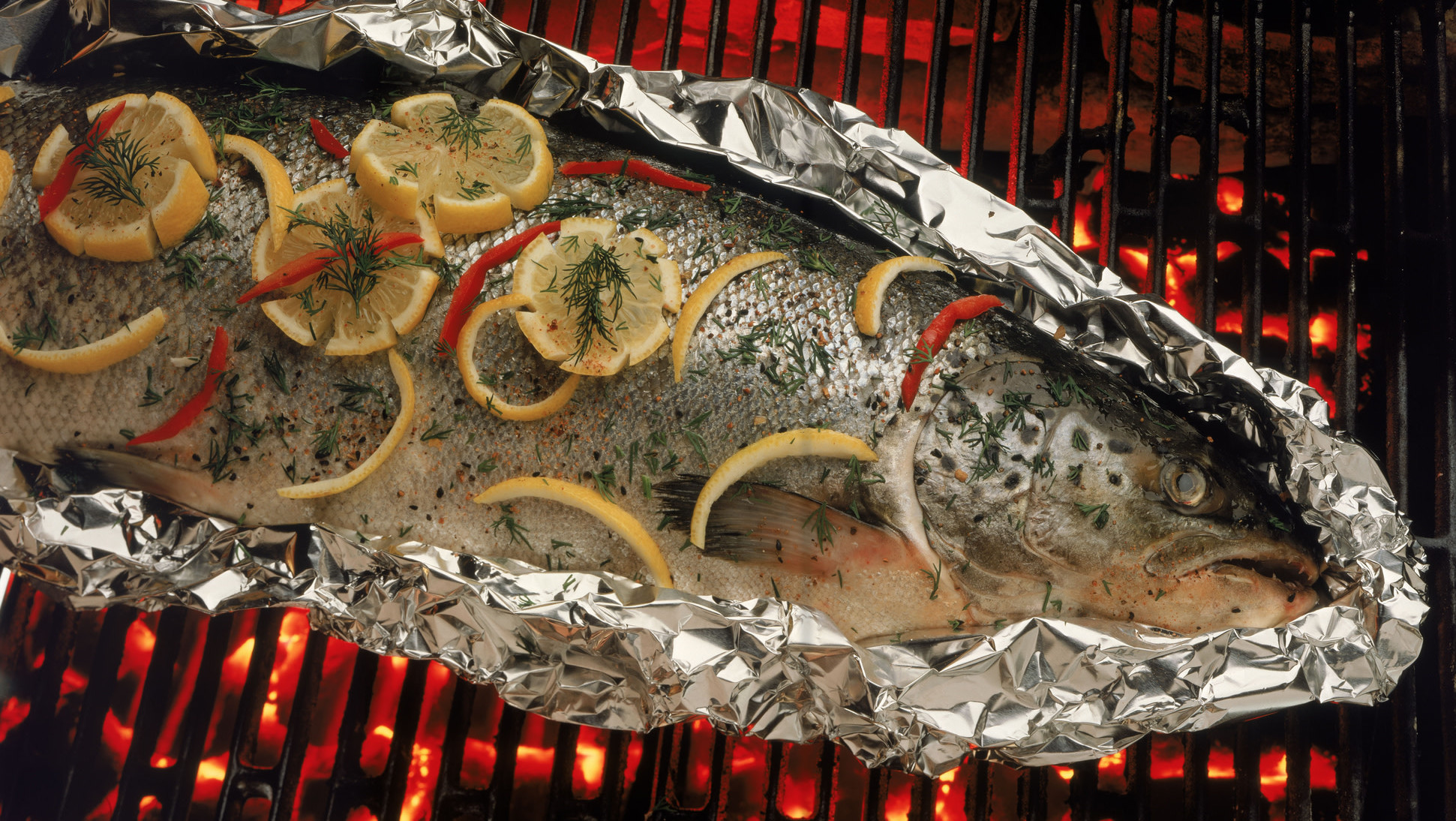Go Heavy-Duty For Thicker Foil, Lesser Toil
We may receive a commission on purchases made from links.
From the outside, parents tend to have bizarre passions. My dad's happened to be anything related to the ritual of searing food over fire. In his prime, he grilled dinner close to 150 nights a year—even though we lived in a cold-weather state. I was there for a high percentage of his sessions, and I heard his stance on aluminum foil, typically delivered with Frank Costanza levels of passion, countless times: "Always buy the HEAVY-DUTY foil!"
I didn't always heed his advice. In my early cooking attempts, I used single layers of regular foil. I was rewarded with torn wrapping and burnt food. I graduated to double layers of foil. It was only slightly better. Still frustrated, I eventually took the plunge and tried heavy-duty foil. I'm glad I did.
Aluminum foil is manufactured by melting a slab of aluminum, pressing it out, and rolling it to a specific thickness. Heavy duty aluminum foil is pressed to a higher thickness than traditional aluminum foil, typically 50% to 100% thicker. As a result, when you buy heavy-duty foil, there are typically fewer square feet per roll: 75 square feet of regular foil is around the same price as 50 square feet of heavy-duty foil.
Despite a higher price point, your foil mileage goes much farther when you go heavy-duty. I'm the person at the store who obsesses over the unit cost, but this is a time to resist that urge. Grilling with the heavy-duty foil is like drying yourself off after a shower with a bath towel instead of paper towels. Both will get you dry, but the bath towel is more efficient due to its sturdiness: you need fewer towels to get the job done.
A single sheet of heavy foil stands up better to high heat and offers better temperature control if you're cooking food in a foil packet or directly over coals. It holds a firmer crimp. You have a much better chance of keeping the end bones of a rack of ribs sealed in heavy-duty foil, and there's less of a chance of oil and butter seeping out from a packet of roasted potatoes and falling into the fire and causing a flare-up. On a windy day, it will save you from traipsing across the yard to retrieve foil blown off a plate by one strong gust.
If you're grilling vegetables, a single sheet of heavy-duty foil offers better protection against food falling through the grates. There's also a lower puncture risk: I have torn through regular foil with my metal tongs before, only to see a sad asparagus spear fall to its charred doom on hot coals.
One of my favorite grill cleaning hacks is to use a jagged ball of heavy-duty foil as a makeshift scraper to remove the blackened gunk from the metal grate (this tactic also works well on cast iron pans). Regular foil is more malleable and less effective unless you use a lot.
Finally—and I admit this is entirely subjective—there's a feeling of substance and permanence to the heavy-duty foil, as if you are making a work of art every time you grill. Personally I take the process more seriously when I cook with it, efficiently removing only what I need from the roll, down to the quarter inch.
Despite the higher price point, heavy-duty foil should save you some money over time. If you figure on using twice as much regular foil to do the same job, your foil expenses could be as much as one-third higher due to the extra material. I know this isn't major dollars, but think of it as a buy-three-get-one-free proposition.
There were other grill-related axioms my father shared, but his impassioned foil advice stuck with me the most. I hope you find it useful, and that the advice of my yelling father also accompanies you through the foil aisle the rest of your life.
